
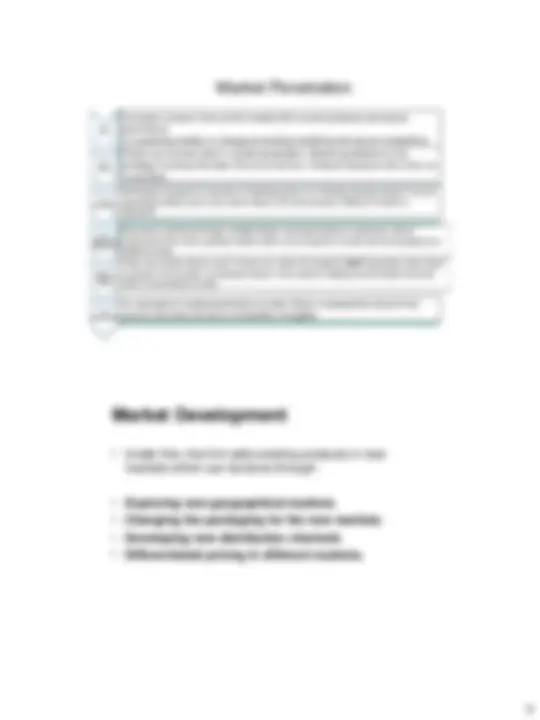
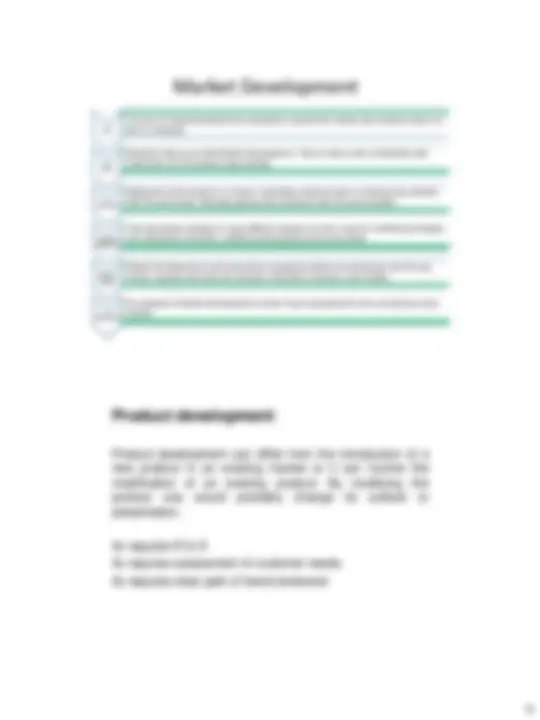
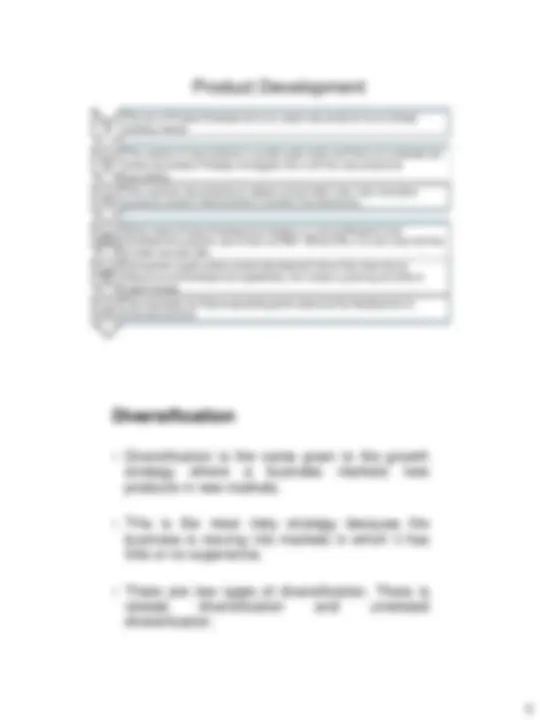
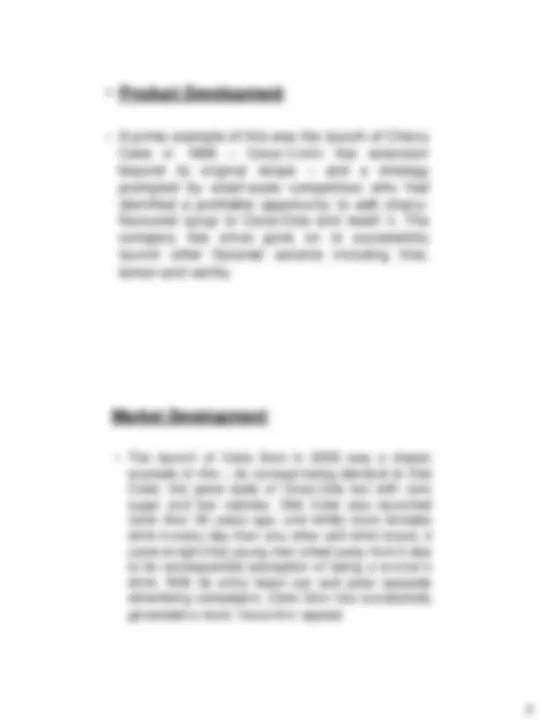
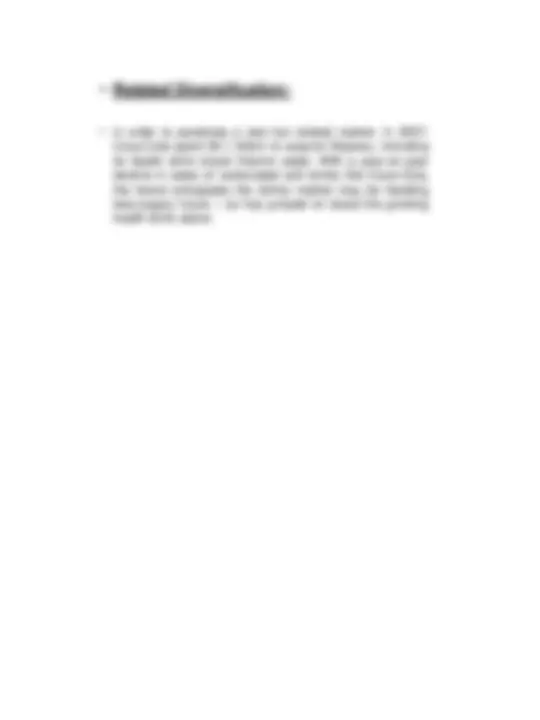


Study with the several resources on Docsity

Earn points by helping other students or get them with a premium plan


Prepare for your exams
Study with the several resources on Docsity

Earn points to download
Earn points by helping other students or get them with a premium plan
Community
Ask the community for help and clear up your study doubts
Discover the best universities in your country according to Docsity users
Free resources
Download our free guides on studying techniques, anxiety management strategies, and thesis advice from Docsity tutors
An in-depth analysis of Ansoff Matrix, a strategic planning tool used by businesses to identify and evaluate various growth strategies. Market Penetration, Product Development, Market Development, and Diversification, discussing their aims, risks, contents, and examples. Tesco is used as a case study to illustrate each strategy.
What you will learn
Typology: Lecture notes
1 / 9

This page cannot be seen from the preview
Don't miss anything!






Market Existing Existing Market Penetration New Product Development N ew Market Development Diversification
“Market penetration is where the company gains Market share”. Either the number of consumers using the product that is bringing in new consumers. Consumption levels of the existing consumers It mainly aims at 4 objectives-
Aim Risks Contents Achieved^ How is it When to use it Examples An example of Market Development is when Tesco expanded into the convenience store market. Moderate risks come with Market Development. There is also a lack of familiarity with customers, but the product stays familiar. Market Development is best used when untapped markets are beckoning, the firm has excess capacity and there are attractive channels to access a new market. Selling the same product to a newer, expanding customer base or entering new markets with the same base. Basically gaining new customers with the same product. This will include changes to many different aspects of a firm, such as marketing strategies, new distribution channels, a different pricing policy and many others. The aim of market development is basically to expand the market and customer base of a firm or company.
Product development can differ from the introduction of a new product in an existing market or it can involve the modification of an existing product. By modifying the product one would probably change its outlook or presentation, Its requires R & D Its requires assessment of customer needs Its requires clear path of brand extension
Product Development Aim Risks Contents Achieved^ How is it When to use it Examples Two examples are Tesco expanding petrol sales and the development of financial services. The aim of Product Development is to create new products for an already existing market. The creation of new products is usually quite costly and there are moderate risk levels associated. Probably the biggest risk is will this new product be successful. Companies usually utilize product development when they have strong Resource and Development capabilities, the market is growing and there is rapid change. This could be new products to replace current older ones, new innovative products, product improvements or product line extensions. What makes Product Development easiest, is a strong Research and Development program, also known as R&D. Without this, it is very risky and has a lower success rate. Diversification